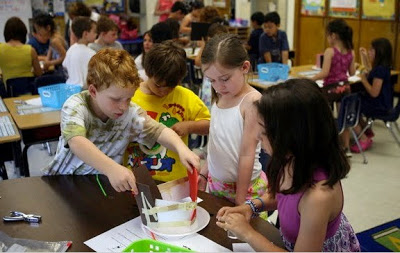Language Change Regularity of Sound Change: Consistent change according to phonological rules; for example, the caught-cot merger, which has occurred in regular contexts in areas of North America and Scotland. see: the Northern Cities Vowel Shift affects the six short vowels in caught, cot, cat, bit, bet and but. Sound Correspondences: Great Vowel…
Author: jar55
IMA Linguistics 540 Class 12
Psycholinguistics area of linguistics concerned with linguistic performance in speech or sign production & comprehension Nature of linguistic knowledge: not a set of fixed phrases stored in memory speech chain (brain-to-brain linking) mechanisms allow us to break stream of sounds into linguistic units Comprehension: How do we “unpack”language that is complex? Breakdowns reveal how…
IMA 540 Linguistics Class 11
Deborah Tannen: The Medium is the Metamessage Introduction Bateson – coined term Metacommunication: “the subject of discourse is the relationship between the speakers” The metamessage, according to Tannen, is implicit, and indicates how the ‘speaker’ intends the message. Same statements about the politeness of different conversational styles apply to text messages as to…
IMA Linguistics 540 Class 10
George Lakoff & Mark Johnson – Metaphors We Live By How basic is metaphor to our conceptual system? Do our metaphors define our reality? STRUCTURAL METAPHORS ARGUMENT IS WAR (But it could be dance!) Is this why pacifists don’t like to argue? TIME IS MONEY (i.e., a valuable commodity) Michael Reddy – the…
IMA 540 Linguistics Class 9
Student Exercises Exercise 14 (p.228) on The Jabberwocky Semantics: the study of the linguistic meaning of morphemes, words, phrases, and sentences Subfields lexical semantics: concerned with the meanings of words phrasal or sentential semantics: concerned with larger syntactic units There are more types which the text doesn’t cover Pragmatics: The interpretation of linguistic meaning in context. (according…
IMA 540 Linguistics Class 8
Deborah Tannen: Conversational Style Chapter 2: Theoretical Background Analysis of conversation is a subdomain of discourse analysis (which also includes written text). CA is related to Semantics – basic question is ‘how do people communicate and interpret meaning in conversation?’ Style: Hymes described as register; Ervin-Tripp as alternation. Tannen refers to choices of particular…
Communication and Collaboration
Task 3 of Learning and Innovation Skills: Communication and Collaboration Communicate Clearly Articulate thoughts and ideas effectively using oral, written and nonverbal communication skills in a variety of forms and contexts Listen effectively to decipher meaning, including knowledge, values, attitudes and intentions Use communication for a range of purposes (e.g. to inform, instruct,…
Critical Thinking and Problem Solving
Task 2 of Learning and Innovation Skills: Critical Thinking and Problem Solving Reason Effectively Use various types of reasoning (inductive, deductive, etc.) as appropriate to the situation Use Systems Thinking Analyze how parts of a whole interact with each other to produce overall outcomes in complex systems Make Judgments and Decisions Effectively analyze and…
Creativity and Innovation
Task 1 of Learning and Innovation Skills: Creativity and Innovation Questions in red are for participants to discuss. Think Creatively Use a wide range of idea creation techniques (such as brainstorming) Create new and worthwhile ideas (both incremental and radical concepts) Elaborate, refine, analyze and evaluate their own ideas in order to improve…
Keeping up with the Digital Revolution in the Language Classroom
21st Century teachers of English as a Second Language are faced with the dual challenges of helping their students master academic skills in a new language and utilize the tools provided by modern technology to further their learning and facilitate their achievement. Language and the thinking skills referred to as 21st Century Skills…


